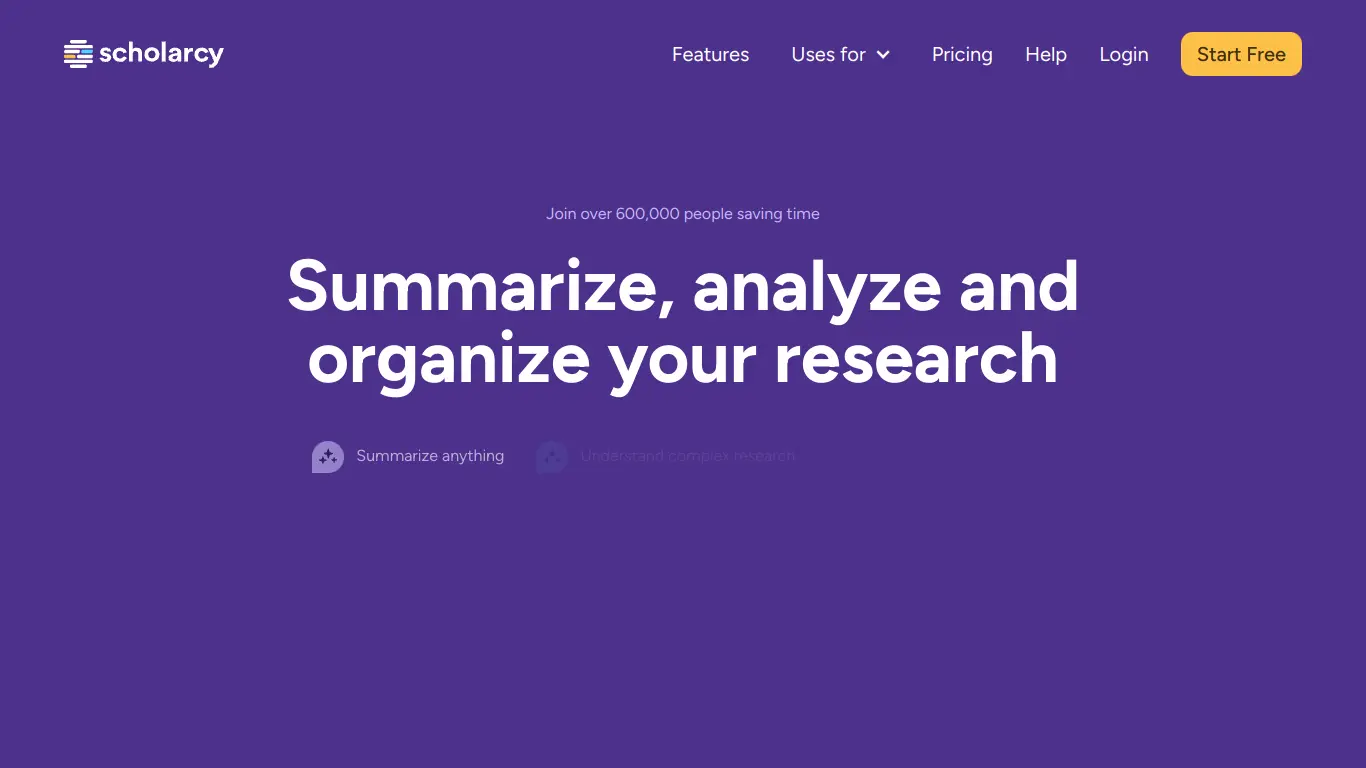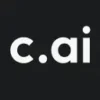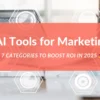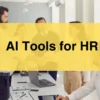Scholarcy uses AI to extract key information from research papers, saving academics and professionals hours of reading time.
Introduction to Scholarcy
Ever tried to read a 30-page academic paper when you only had 15 minutes before your next meeting? Or found yourself drowning in research literature, desperately trying to extract the key points from dozens of dense articles? If you’ve spent hours highlighting PDFs and taking notes on scholarly material, you’re not alone. Academic reading is time-consuming, mentally taxing, and sometimes feels like searching for needles in haystacks.
This is exactly where Scholarcy steps in to revolutionize how we consume academic content.
What is Scholarcy and its Purpose?
Scholarcy is an AI-powered research reading tool designed to transform lengthy academic papers, reports, and articles into digestible, interactive flashcards containing the essential information. Founded in 2017, this innovative platform uses machine learning to automatically identify and extract key findings, methods, results, and references from complex research papers.
Think of Scholarcy as your personal research assistant that reads papers for you, highlights what matters most, and helps you quickly grasp the core concepts without spending hours on each document. Its primary purpose is to dramatically reduce reading time while improving comprehension and retention of scholarly material.
Unlike basic summarization tools, Scholarcy doesn’t just condense text—it intelligently identifies and extracts the structural elements that make academic papers valuable: methodology details, statistical findings, citations, key arguments, and conclusions.
Who is Scholarcy Designed For?
Scholarcy caters to a diverse audience of knowledge workers who regularly engage with complex research content:
- Academic researchers who need to efficiently process large volumes of literature
- Graduate students tackling extensive reading lists and literature reviews
- Professors and educators preparing course materials or staying current in their field
- Knowledge professionals such as journalists, lawyers, and consultants who need to quickly extract insights from technical documents
- Healthcare professionals keeping up with medical literature
- Policy analysts reviewing research reports and technical documentation
- R&D professionals in industry settings monitoring scientific developments
Anyone who struggles with information overload and needs to extract meaningful insights from lengthy academic or technical documents will find Scholarcy invaluable.
Getting Started with Scholarcy: How to Use It
Getting up and running with Scholarcy is straightforward:
- Sign up: Visit scholarcy.com and create an account. You can start with a free plan to test the waters.
- Choose your upload method: Upload PDFs directly to the web app, use the Chrome extension to analyze papers as you browse, or paste text/URLs.
- Process your paper: Scholarcy will analyze your document, which typically takes 20-30 seconds depending on length.
- Review your flashcards: Once processed, you’ll see your paper transformed into interactive flashcards containing key points, highlighted findings, and extracted references.
- Customize if needed: Use the settings to adjust the summary length, focus on specific elements (like methods or results), or export in your preferred format.
The web interface is intuitive, but for maximum efficiency, many users prefer the Chrome extension, which integrates seamlessly with popular academic databases like Google Scholar, PubMed, arXiv, and university library systems.
Scholarcy’s Key Features and Benefits
Core Functionalities of Scholarcy
Scholarcy transforms dense academic reading through several powerful features:








The real magic happens in how Scholarcy understands the structure of academic papers. Rather than merely shortening text, it recognizes methods sections, results, limitations, and conclusions—preserving the critical components that give research its value.
Advantages of Using Scholarcy








The platform essentially democratizes access to complex research by making it more digestible for both experts and those newer to a field.
Main Use Cases and Applications
Scholarcy adapts to numerous research workflows and scenarios:
Literature Reviews
Researchers can rapidly process dozens of papers to identify relevant studies for inclusion in reviews, extracting key methodologies and findings without reading every word.
Academic Writing
Writers can easily reference and cite papers, pulling exact quotes and findings to support their arguments without constantly revisiting full texts.
Exam Preparation
Students create study materials from course readings, focusing on essential concepts rather than getting lost in details.
Conference Preparation
Presenters quickly familiarize themselves with speakers’ previous work or related research before attending sessions.
Interdisciplinary Research
Scholars venturing outside their expertise can grasp unfamiliar concepts more quickly by focusing on key points in specialized literature.
Research Screening
Teams can rapidly assess the relevance of papers before deciding which warrant deeper reading.
Teaching Materials
Educators create concise handouts and lecture notes based on current research without spending hours manually summarizing.
Exploring Scholarcy’s Platform and Interface
User Interface and User Experience
Scholarcy’s interface strikes an impressive balance between functionality and simplicity. The clean, minimalist design focuses attention on what matters most: the content of your research papers.
Web Application
The main dashboard presents a straightforward library view of your processed papers. Each paper appears as a card with title, authors, publication date, and a small preview of the summary. The reading interface is particularly well-designed, with a split-screen approach:
- Left panel: Interactive flashcards with expandable sections
- Right panel: Original paper for reference
- Top navigation: Tools for adjusting summary length, focusing on specific elements, and exporting
Color-coded highlighting helps distinguish different types of information (methods, results, conclusions), while interactive elements let you click on citations to see full reference details instantly.
Chrome Extension
The extension integrates seamlessly with academic websites, adding a “Summarize with Scholarcy” button to compatible pages. This contextual integration makes the tool feel like a natural part of your research workflow rather than a separate application.
Platform Accessibility
Scholarcy is available across multiple platforms and access points:




The platform also demonstrates commitment to accessibility through:
- Keyboard navigation support
- Screen reader compatibility
- Adjustable text sizes
- High-contrast viewing options
- Compatible output formats (including Word and HTML) for users with specific accessibility needs
One limitation worth noting is that while the interface is intuitive for tech-savvy users, the initial learning curve might be steeper for those less familiar with research tools. However, comprehensive documentation and tutorial videos help bridge this gap.
Scholarcy Pricing and Plans
Subscription Options
Scholarcy offers a tiered pricing model to accommodate different user needs and budgets:

The free plan provides enough functionality to evaluate Scholarcy’s capabilities, but serious researchers will likely find the limitations restrictive for regular use. Most active academic users find the Personal plan sufficient, while Professional features become valuable for those conducting extensive literature reviews or working across multiple research projects simultaneously.
Scholarcy Reviews and User Feedback
Pros and Cons of Scholarcy
Based on aggregated user feedback from various review platforms, here’s how Scholarcy’s strengths and weaknesses stack up:
Pros:








Cons:







The consensus among users is that despite its limitations, Scholarcy delivers substantial value for academic and professional researchers who regularly work with scholarly literature.
User Testimonials and Opinions
Academic users are particularly vocal about how Scholarcy has transformed their research workflows:
“As a PhD student conducting a systematic literature review, Scholarcy has been nothing short of revolutionary. I’ve processed over 200 papers in a fraction of the time it would have taken to read them traditionally. The flashcard format helped me quickly identify which papers warranted deeper reading.” — Emma K., Doctoral Researcher
“I was skeptical about AI summary tools, having been disappointed by generic summarizers in the past. Scholarcy is different—it actually understands academic writing conventions and extracts meaningful content rather than just shortening text.” — Prof. James T., Computer Science Department
“The reference extraction feature alone is worth the subscription. No more manually formatting citations or hunting for missing details.” — Sarah M., Medical Researcher
Industry professionals also find value in the platform:
“Our policy research team uses Scholarcy to stay on top of emerging research across multiple disciplines. It’s become an essential part of our knowledge management workflow.” — David L., Think Tank Director
“The ability to quickly process technical documents and research papers gives our legal team a competitive edge when preparing for cases involving scientific evidence.” — Michael P., Legal Consultant
While most feedback is positive, some users note limitations:
“It works brilliantly for well-structured papers but sometimes struggles with unconventional formats or heavily image-based documents.” — Researcher in Materials Science
“I wish there were more customization options for the types of information extracted. Sometimes I only care about methodology, other times just the results.” — Psychology Professor
Scholarcy Company and Background Information
About the Company Behind Scholarcy
Scholarcy was founded in 2017 by Phil and Becca Gooch, who identified a critical need in academic research: the ability to quickly extract and retain key information from the ever-growing volume of scholarly literature. Phil, with a background in natural language processing and machine learning, combined technical expertise with the practical pain points experienced by researchers to create the initial prototype.
The London-based company has grown steadily since its launch, maintaining a focus on academic and professional users while expanding its capabilities. Unlike many AI startups that quickly pivot to general business applications, Scholarcy has remained committed to solving the specific challenges of academic reading and research.
Key company milestones include:
- 2017: Foundation and initial development
- 2018: Public launch of the web application
- 2019: Release of the Chrome extension and integration with major academic databases
- 2020: Introduction of reference network visualization features
- 2021: Expansion of language support and improved processing algorithms
- 2022: Launch of team and enterprise solutions
- 2023: Enhanced machine learning capabilities and expanded integration options
The company maintains a relatively small but specialized team, with expertise spanning natural language processing, academic publishing, user experience design, and research methodology. This focused approach has allowed them to develop deep expertise in academic content processing rather than attempting to serve too many market segments simultaneously.
Scholarcy has formed partnerships with several academic publishers and institutions, though it remains an independent company rather than being acquired by one of the major academic publishing conglomerates—a decision that users generally appreciate for ensuring the tool remains publisher-neutral.
Scholarcy Alternatives and Competitors
Top Scholarcy Alternatives in the Market
Several tools offer functionalities that overlap with Scholarcy’s capabilities, though most focus on different aspects of research management:
- Elicit – Research assistant that uses AI to find relevant papers and extract insights
https://elicit.org - Iris.ai – AI-powered research assistant focusing on exploration and discovery
https://iris.ai - SciSpace – Provides paper summaries and explanations of complex concepts
- Connected Papers – Visualizes the academic paper network to discover related research
https://www.connectedpapers.com - Research Rabbit – Helps discover related papers through an intuitive interface
https://researchrabbitapp.com - Semantic Scholar – Academic search engine with some built-in paper analysis features
https://www.semanticscholar.org
- QuillBot – Offers summarization alongside its primary paraphrasing capabilities
https://quillbot.com - TLDR This – Simple summarization tool for articles and papers
https://tldrthis.com
Scholarcy vs. Competitors: A Comparative Analysis
| Tool | Primary Strength | Weakness vs. Scholarcy | Best For |
|---|---|---|---|
| Scholarcy | Paper summarization & reference extraction | Higher cost than some alternatives | Researchers needing detailed paper summaries |
| Elicit | Research question answering | Less detailed paper summaries | Exploratory research phases |
| Iris.ai | Research discovery | Steeper learning curve | Finding connections across disciplines |
| SciSpace | Paper explanation & concept definitions | Less robust library management | Students learning complex topics |
| Connected Papers | Visual paper relationships | No in-depth summaries | Discovering related literature |
| Research Rabbit | Collection building & recommendations | Less focus on paper content extraction | Building reading lists |
| Semantic Scholar | Comprehensive paper database | Basic summarization capabilities | Initial literature searches |
| QuillBot | General text summarization | Not specialized for academic content | Quick, simple summaries |
What distinguishes Scholarcy from many competitors is its specific focus on extracting structured information from academic papers rather than just shortening text. While tools like Elicit and Research Rabbit excel at discovery and recommendation, Scholarcy concentrates on helping users process and retain information from papers they’ve already identified as relevant.
The most common user pattern is actually combining Scholarcy with other research tools—using discovery platforms to find papers and Scholarcy to process them efficiently once identified.
Scholarcy Website Traffic and Analytics
Website Visits Over Time
Scholarcy has shown consistent growth in web traffic over the past few years, reflecting increasing adoption among academic and professional researchers:

- 2020: ~250,000 visits
- 2021: ~420,000 visits
- 2022: ~680,000 visits
- 2023: ~950,000 visits
Traffic patterns show notable fluctuations that align with academic calendars:
- Peak periods typically occur during literature review seasons (September-November and January-March)
- Notable dips during academic holiday periods (late December and summer months)
- Steady baseline growth indicating expanding professional/non-academic usage
Geographical Distribution of Users
Scholarcy’s user base spans globally but shows particular concentration in regions with high densities of research institutions:

- United States (28%)
- United Kingdom (16%)
- Canada (8%)
- Australia (7%)
- Germany (6%)
- India (5%)
- Netherlands (4%)
- France (3%)
- Japan (3%)
- Sweden (2%)
The remaining 18% is distributed across other countries, with growing adoption in emerging research markets like Brazil, China, and South Africa.
Main Traffic Sources
Understanding how users discover and access Scholarcy provides insight into its role in research workflows:

- Organic Search: 42% (primarily research-related queries)
- Direct Navigation: 25% (indicating strong brand recognition among users)
- Referrals from Academic Sites: 18% (university libraries, Google Scholar)
- Social Media: 8% (predominantly Twitter/X and LinkedIn)
- Email Campaigns: 5%
- Other Sources: 2%
The high percentage of direct navigation suggests that Scholarcy has developed a loyal user base who incorporate the tool into their regular research routines rather than finding it through casual browsing.
Frequently Asked Questions about Scholarcy (FAQs)
General Questions about Scholarcy
What exactly does Scholarcy do?
Scholarcy uses artificial intelligence to analyze academic papers and research documents, extracting key information and creating interactive flashcards with summaries, key findings, methodologies, and references. It helps researchers understand and retain essential information from papers in a fraction of the time needed for traditional reading.
Does Scholarcy work with all types of documents?
Scholarcy is optimized for academic papers, research articles, and structured reports. It works best with PDF documents that follow typical academic formatting. It can process some Word documents and web articles, but performance may vary with non-standard formats.
What languages does Scholarcy support?
Scholarcy primarily processes English-language documents but also supports papers in German, French, Spanish, Italian, Portuguese, Dutch, and several other European languages. Performance is typically strongest with English content.
Feature Specific Questions
How accurate are Scholarcy’s summaries?
Scholarcy’s extraction accuracy typically ranges from 85-95% for well-structured academic papers. Technical accuracy depends on the field and complexity of the paper, with some specialized content occasionally requiring manual verification.
Can Scholarcy handle mathematics and scientific notation?
Yes, Scholarcy can process papers containing mathematical equations and scientific notation. The tool preserves these elements in the flashcards, though complex mathematical proofs may sometimes be condensed.
Does Scholarcy integrate with reference managers?
Yes, Scholarcy can export bibliographic information in BibTeX, RIS, and EndNote formats, making it compatible with popular reference managers like Zotero, Mendeley, and EndNote. Some managers also support direct integration through the Chrome extension.
Pricing and Subscription FAQs
Is there a student discount available?
Yes, Scholarcy offers educational discounts of approximately 40% off standard pricing for verified students and faculty members at academic institutions.
Can I upgrade or downgrade my subscription?
Yes, you can change your subscription level at any time. Changes take effect at the next billing cycle, with prorated adjustments for mid-cycle changes.
What happens to my processed papers if I cancel my subscription?
If you downgrade to a free account, you’ll maintain access to your library but will be limited to processing 5 new papers per month. If you completely close your account, you should export any summaries you wish to keep before cancellation.
Support and Help FAQs
How can I get help if Scholarcy isn’t working properly?
Scholarcy provides support through several channels:
- Email support via help@scholarcy.com
- Knowledge base at support.scholarcy.com
- Twitter/X direct messages
- Live chat support for Professional and Team plans
Can I request features or improvements?
Yes, Scholarcy actively encourages user feedback and feature requests. Many current features originated from user suggestions. You can submit ideas through the feedback form in your account dashboard or via email.
Is there training available for new users?
Scholarcy offers free webinars twice monthly for new users, plus comprehensive tutorial videos on their YouTube channel. Team and Enterprise plans include personalized onboarding sessions.
Conclusion: Is Scholarcy Worth It?
Summary of Scholarcy’s Strengths and Weaknesses
After thoroughly examining Scholarcy’s capabilities, pricing, and user feedback, here’s a balanced assessment of its value proposition:
Key Strengths:
- Delivers significant time savings for research-intensive work
- Accurately extracts structured information from academic papers
- Excellent reference management and citation features
- Clean, intuitive interface that integrates well with research workflows
- Continual improvements and new feature development
- Strong focus on academic needs rather than general summarization
Notable Limitations:
- Monthly paper limits may constrain heavy users
- Pricing might be steep for individual researchers on limited budgets
- Occasional processing challenges with non-standard paper formats
- Some specialized technical content requires verification
- Limited customization for extraction preferences
Final Recommendation and Verdict
Scholarcy represents a substantial advancement in how researchers interact with academic literature. For anyone regularly working with scholarly papers—whether in academia, industry research, or knowledge-intensive professions—the tool offers genuine value that justifies its cost.
The most compelling case for Scholarcy comes from time economics: if you value your professional time at even a modest rate, the hours saved on reading and processing academic content quickly outweigh subscription costs. A researcher saving just 2-3 hours monthly through more efficient paper processing recoups the investment many times over.
Who should definitely use Scholarcy:
- PhD students and academic researchers conducting literature reviews
- Professionals who need to stay current with research in their field
- Anyone preparing academic manuscripts who needs efficient citation management
- Teams collaborating on research-intensive projects
- Individuals who struggle with information retention from academic reading
Who might consider alternatives:
- Casual readers who only occasionally engage with academic papers
- Those primarily seeking paper discovery rather than processing
- Researchers working with highly specialized formats not well-supported by AI processing
- Users with extremely limited budgets who can manage with basic summarization tools
For most knowledge workers who regularly engage with research literature, Scholarcy stands as an invaluable companion that transforms the reading experience from overwhelming to manageable. Its focused approach to academic content processing sets it apart from general summarization tools, making it worth serious consideration for anyone drowning in research papers.
The bottom line: If academic reading consumes significant portions of your work life, Scholarcy isn’t just worth trying—it may fundamentally transform how you engage with scholarly literature.




















